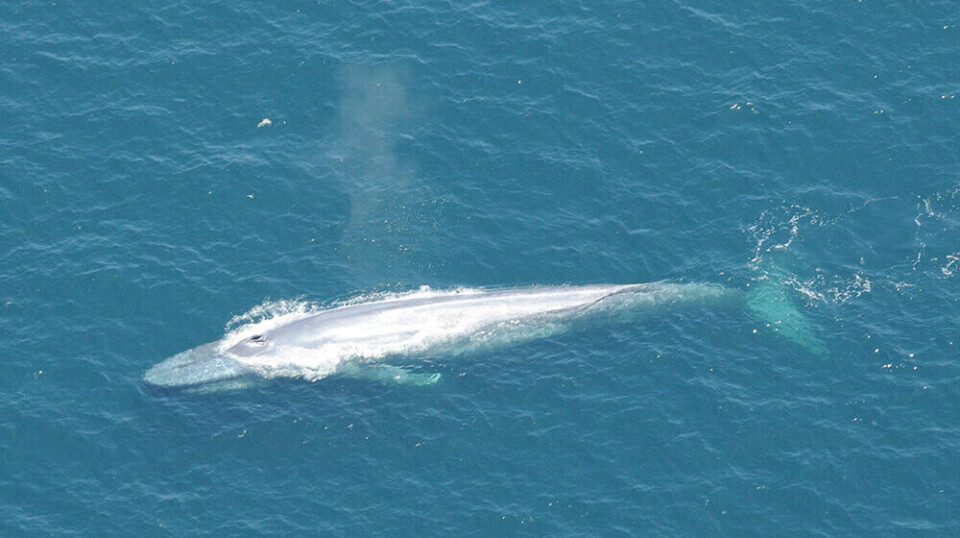THIS CONTENT IS BROUGHT TO YOU BY NTNU Norwegian University of Science and Technology - read more

Is it possible to avoid ship strikes by eavesdropping on whales?
19th-century Norwegian technology helped bring large whale populations to the brink of extinction. Can 21st-century technology help save them?
It’s the summer of 2020, and two NTNU postdocs are scanning their computer screens while listening, intently, to the crackle and buzz of the files they are scanning.
Each day, for 40 days, the two researchers, Léa Bouffaut and Hannah Joy Kriesell, are sent seven terabytes of data from a remote research station in Svalbard.
The data comes from subsea fibre-optic cables strung between the station and Svalbard’s main town, Longyearbyen, roughly 120 km apart.
The two researchers are part of a team that is trying to do something that has never been done before: To use the same subsea fibre-optic cables that are used for communication and the internet to eavesdrop on whales.
The system is called Distributed Acoustic Sensing, or DAS.
The researchers were able to identify hundreds of different sounds, some of which were caused by storms, earthquakes, and ships passing over or near the cable. But one day, Bouffaut hears what she has been hoping for.
“The day I knew I had a blue whale signal… I was just like, Well, that’s it. That’s it. That’s what we were looking for. This is my happiest day,” she said on the latest episode of 63 Degrees North, NTNU's English-language podcast.
A big ocean and big animals
All told, the researchers were able to identify at least 830 different whale calls, Martin Landrø said.
He is a professor in the Department of Electronic Systems, and head of NTNU’s Centre for Geophysical Forecasting.
“I think it’s the first time that (this system) has been used to listen to blue whales,” he said.

The beauty of this research is that it demonstrates that the world’s more than 1.2 million kilometres of undersea fibre-optic cables could potentially be used to eavesdrop on whales across the planet, according to Bouffaut.
That could help researchers understand how whales move across large stretches of the ocean in a way that is difficult to do now.
Whale dialects and ship strikes
Ana Širović, an associate professor at NTNU’s Department of Biology, has an extensive library of whale sounds that includes Pacific Ocean whale dialects. She uses this extensive library to help prevent ship-whale collisions in busy California shipping ports.
The west coast of California is home to the busiest port in all of the US, the Port of Los Angeles. It’s estimated that about 80 whales, mostly blue, fin and humpback whales, are killed every year in this area because of ship strikes.
That may not seem like a lot, but there are only an estimated 10,000 to 25,000 blue whales in the whole world.
When Širović joined forces with the Whale Safe Project,she was able to work with other scientists who had developed buoys that send near real time data, alerting nearby ships to the presence of calling whales, enabling ships to prompty reduce their speed.
Avoiding false alarms
One of her key collaborators was Mark Baumgartner of Woods Hole Oceanographic Institution.
“Mark had developed this tool that worked on the east coast of the United States and while some of the species are similar on the west coast, the calls that they produce are very different, they each have their own dialect. So we had to adapt his AI tools, his automated detector tools, to work on those new dialects,” she said on the podcast.
The system is still being perfected, according to Širović, so that the information from the data is verified by an analyst to confirm that there is, in fact, a whale present.
“We don’t want to be the boy who’s crying wolf, right? You want to make sure that if you’re telling ships that they need to slow down that there are whales there,” she said.
References:
Bouffaut et al. Eavesdropping at the speed of light: distributed acoustic sensing of baleen whales in the Arctic, Frontiers in Marine Science, vol. 9, 2022. DOI: 10.3389/fmars.2022.901348
Landrø et al. Sensing whales, storms, ships and earthquakes using an Arctic fibre optic cable, Scientific Reports, vol. 12, 2022. DOI: 10.1038/s41598-022-23606-x
Rørstadbotnen et al. Simultaneous tracking of multiple whales using two fiber-optic cables in the Arctic, Frontiers in Marine Science, vol. 10, 2023. DOI: 10.3389/fmars.2023.1130898
More content from NTNU:
-
Forever chemicals affect ducklings' genes while they are still in the egg
-
Why are pregnant women in Norway so worried?
-
Politics on Facebook: Populist parties choose divisive issues on purpose
-
Social media is connected to cyberbullying – but not how we thought
-
Forskere ved NTNU får nesten 24 millioner av EU for å lage nye strømomformere
-
This helps the youngest children enjoy school more





































